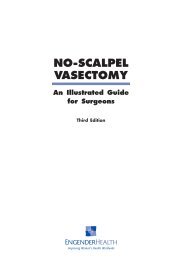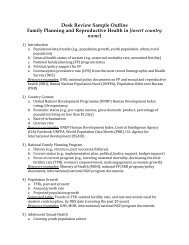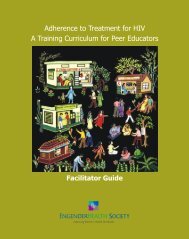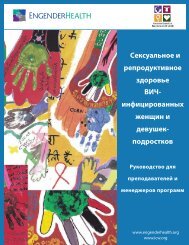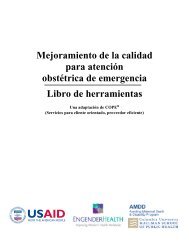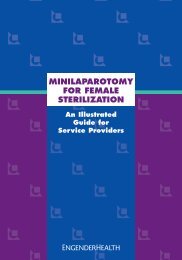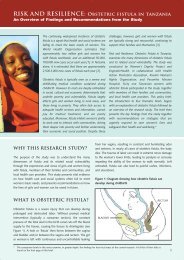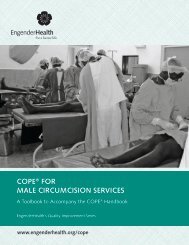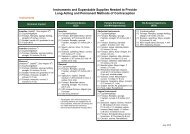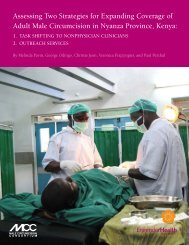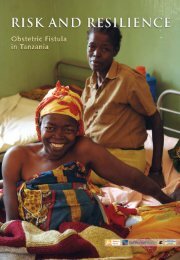Help-Seeking Pathways and Barriers for ... - EngenderHealth
Help-Seeking Pathways and Barriers for ... - EngenderHealth
Help-Seeking Pathways and Barriers for ... - EngenderHealth
You also want an ePaper? Increase the reach of your titles
YUMPU automatically turns print PDFs into web optimized ePapers that Google loves.
Discussion/Ranking: Which actions are common in this community, in terms of<br />
frequency<br />
Discussion/Ranking: Which actions does the community consider normal in<br />
relationships Which go “too far”<br />
Discussion/Ranking: We have been talking about actions within married or dating<br />
couples. Let’s now discuss these items imagining if they were done by a stranger or<br />
mere acquaintance. Which are common Which are normal <strong>and</strong> “too far”<br />
Discussion/Ranking: For which actions on this list would a survivor likely seek help<br />
afterward Would a survivor seek help from family members From professionals From<br />
someone else<br />
Output of activity 1: Free list of types of violence, categorized by all of the above topics of<br />
discussion: which are common, which are normal, which are “violent,” how this changes<br />
outside intimate partnerships, <strong>and</strong> which prompt help-seeking (plus transcripts).<br />
2. <strong>Help</strong>-seeking options <strong>and</strong> behaviors (30 minutes)<br />
Activity: Open-ended story <strong>and</strong> mapping<br />
“Thank you very much <strong>for</strong> all the in<strong>for</strong>mation you’ve already shared with us. Your input is<br />
already very helpful. You have said that after experiencing certain actions, a survivor would<br />
be likely to seek help. We’re now going to discuss how the survivor seeks help <strong>and</strong> where<br />
she can go in your community.”<br />
Steps:<br />
<br />
<br />
<br />
<br />
Divide PFG participants into two groups.<br />
Each group receives an open-ended story prompt about “Martha.” For one group, Martha<br />
is a survivor of repeated physical violence by her husb<strong>and</strong>. For the other group, Martha<br />
is a survivor of rape by a non-intimate male acquaintance. (Story prompts have been<br />
adapted from WHO/PATH guidebook on Researching Violence Against Women, page 145,<br />
“Rosita’s story”)<br />
Groups receive question prompts that establish how <strong>and</strong> where Martha will seek help.<br />
Facilitators guide participants in making a physical map of available services <strong>and</strong><br />
Martha’s path through them. Prompts include:<br />
o<br />
o<br />
Where does Martha go to ask <strong>for</strong> help What do they say to her What will she<br />
decide to do next (repeat through whole path)<br />
If Martha feels very sad, depressed, or scared about the experience, what will<br />
she do Where can she go <strong>for</strong> help<br />
o If Martha fears that she has serious health consequences, what will she do<br />
Where can she go <strong>for</strong> help<br />
o What would be different if Martha were age 17 60<br />
Each group presents its map in plenary <strong>and</strong> the facilitators guide a brief comparative<br />
discussion to elicit the differences in help-seeking between the two types of violence<br />
experienced.<br />
Outputs of activity 2: H<strong>and</strong>-drawn maps of the participant’s community including<br />
available services <strong>and</strong> Martha’s path through them (plus transcripts).<br />
<strong>Help</strong>-<strong>Seeking</strong> <strong>Pathways</strong> <strong>and</strong> <strong>Barriers</strong> <strong>for</strong> Survivors of GBV in Tanzania March 2013<br />
Page 72



